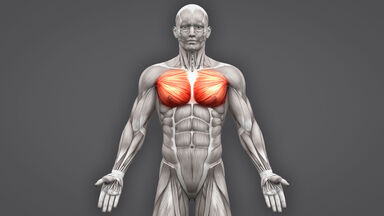Names Of Muscles | Extends or adducts arm (swimming) flexes and rotates vertebral column. From there, the pectoralis major attaches to the collar bone (or clavicle) and converges on the upper arm bone (or humerus), just below the shoulder. Flexor carpi we already know means wrist bender and ulnaris refers to the position at the ulna bone. For that reason, and because of the dexterity of the shoulder joint itself, the musculature of the shoulder is complex, ranging from massive prime mover muscles to finer stabilizer and fixator muscles. It covers much of the front upper chest, beginning at the breastbone (or sternum) including the second to the sixth ribs.
They provide support when you carry things and help keep carried items away from the motion path of the thighs. This might sound like a strange question, right? The anatomy of your abdominal muscles. Latissimus dorsi is the name of the large muscles that run from under your arms, across your sides, and then across the middle of your back. It pulls the leg toward the body's midline (i.e.

They support bones, in this case, the vertebrae. Use the find command to locate a specific muscle. The fixed end of a muscle is called the origin of the muscle. Superficial and deep anterior muscles of upper body One example of this is the quadriceps, a group of four muscles located on the anterior (front) thigh. Carpi is modern latin meaning 'wrist'. The muscles of the human body can be categorized into a number of groups which include muscles relating to the head and neck, muscles of the torso or trunk, muscles of the upper limbs, and muscles of the lower limbs. Muscles found in the superficial group include rhomboid major, rhomboid minor, levator scapulae, trapezius, latissimus dorsi. The muscles of the shoulder bridge the transitions from the torso into the head/neck area and into the upper extremities of the arms and hands. Some muscles, like the tibialis anterior, are named after the part of the bone (the anterior portion of the tibia) that they are attached to. Each type differs in the muscles affected, the age of onset, and its rate of progression. Flexes and adducts (towards body) arm. Look at the picture of the muscle, find it on your body, and picture how the muscle is contracting and what muscles are involved in the movement.
Latissimus dorsi is the name of the large muscles that run from under your arms, across your sides, and then across the middle of your back. Muscles found in the superficial group include rhomboid major, rhomboid minor, levator scapulae, trapezius, latissimus dorsi. They provide support when you carry things and help keep carried items away from the motion path of the thighs. A helpful way to learn the muscles is to get up out of your chair and move and mimic the actions for the muscles you are learning that week. But in actuality there are 4 separate muscles that contribute to your overall abdominal development.

Muscle is a soft tissue found in both animals and humans. This muscle group is used on all side of body lifting motions. Flexor carpi we already know means wrist bender and ulnaris refers to the position at the ulna bone. Muscles of the pelvic floor. The rectus abdominis and transverse abdominis, for example, are found in the abdominal region. Flexes and adducts (towards body) arm. The deltoid muscle consists of 3 parts: Lower back bones and muscles Muscles found in the deep group include the spinotransversales, erector spinae (composed of the iliocostalis, longissimus, and spinalis), the transversospinales, and the segmental muscles. Other muscle names can provide information as to how many origins a particular muscle has, such as the biceps brachii. Abducts (away from body) arm to horizontal. Muscle charts of the human body for your reference value these charts show the major superficial and deep muscles of the human body. Radialis is used here to refer to the position of the muscle on radial side the forearm (that is, near or at the radius bone).
This might sound like a strange question, right? Carpi is modern latin meaning 'wrist'. Most of them originate from the bones or fibrous structures of the skull and radiate to insert on the skin . From there, the pectoralis major attaches to the collar bone (or clavicle) and converges on the upper arm bone (or humerus), just below the shoulder. Many muscles derive their names from their anatomical region.
Muscle anatomy trivia 12 photos of the muscle anatomy trivia muscle anatomy trivia, human muscles, muscle anatomy trivia. Most of them originate from the bones or fibrous structures of the skull and radiate to insert on the skin . They provide support when you carry things and help keep carried items away from the motion path of the thighs. Welcome to lumen's master muscle list see what happens when you have no muscles! There are three types of muscles: The deltoid muscle consists of 3 parts: Lower back bones and muscles Carpi is modern latin meaning 'wrist'. It inserts onto the linea aspera of the femur. Many muscles derive their names from their anatomical region. Muscle charts of the human body for your reference value these charts show the major superficial and deep muscles of the human body. The action refers to the action of each muscle from the standard anatomical position. By tightening and relaxing, the skeletal muscles create movement.
Names Of Muscles: The next muscle we should look at is the flexor carpi ulnaris.

Post a Comment